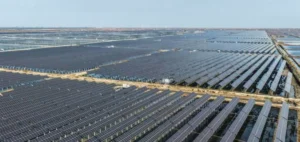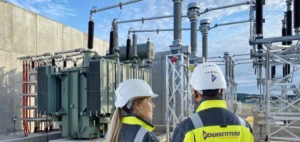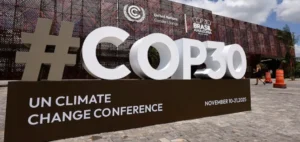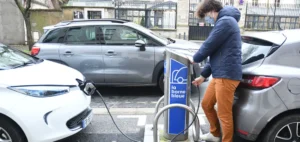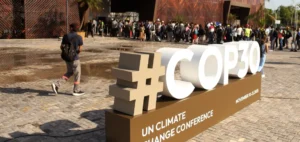In 2024, the United States maintained its carbon dioxide (CO₂) emissions at approximately 5.1bn tonnes, a level nearly unchanged compared to the previous year, according to the Energy Information Administration (EIA). Despite this apparent stability, sectoral data reveal contrasting dynamics, particularly in the electricity sector where emissions have slightly increased, while other economic sectors such as transport and industry show relative stagnation. Against this backdrop, Donald Trump’s return to the presidency in early 2025 opens the way for a profound revision of US energy policy, likely promoting fossil fuels. This shift raises major questions about the potential impacts on future emissions and investment strategies in the energy sector.
Emission stabilisation in a complex context
In 2024, the US electricity sector emitted around 1.64bn tonnes of CO₂, marking a moderate increase of 0.5% compared to the previous year. This rise is mainly due to increased electricity consumption and greater use of natural gas-fired power plants. Natural gas now accounts for approximately 73% of US thermal electricity production, while coal’s share continues to decline, reaching 26%. Reduced coal usage is a well-established trend supported by economic rationale, linked to the increasing competitiveness of natural gas and renewable energy sources.
Trump administration announces fossil fuel revival
Donald Trump’s assumption of office in January 2025 heralds significant regulatory revisions in the US energy sector. Immediately upon taking office, Trump initiated a process aimed at relaxing existing environmental regulations, notably by challenging emissions limits imposed on power plants under the Clean Power Plan (CPP). This strategy aligns with a broader effort to bolster domestic oil and natural gas production, aiming to enhance American industrial competitiveness internationally. Additionally, the announced US withdrawal from the Paris Agreement in early 2025 sends a strong political signal to all stakeholders in the energy sector.
Mixed reactions within the US energy sector
These regulatory changes have sparked varied reactions among US industrial players. Companies such as ExxonMobil and Chevron positively view the new federal orientation, anticipating renewed investment and increased international competitiveness. Conversely, firms heavily invested in renewable energies like NextEra Energy and Duke Energy express concerns about potential negative impacts of new federal policies on their growth and investment strategies. According to these stakeholders, Trump’s announced tariff modifications on imports of renewable energy equipment could significantly slow momentum in this rapidly expanding sector in the United States.
Projected impacts of new regulatory measures
According to analyses published by Rhodium Group and government agencies, relaxing environmental constraints could cumulatively increase US CO₂ emissions by approximately 123mn additional tonnes by 2035. The Congressional Budget Office (CBO) further indicates that the new measures could significantly stimulate US hydrocarbon production, but also warns of potential increased health and environmental costs linked to rising air pollutant emissions. Investors must therefore anticipate revisions in regulation-related costs and a rebalancing of financial risks in energy projects in the medium term.
Moderating factors on the US market
Despite these announced federal measures, economic factors could moderate the actual impact of Trump’s new policies on US emissions. The growing economic competitiveness of solar and wind technologies, alongside energy storage solutions, represents a strong trend likely to persist irrespective of federal regulatory contexts. Additionally, many US states and private stakeholders maintain ambitious environmental and energy policies that could mitigate the effects of federal deregulation. This complex situation will force companies into deep strategic analyses to best anticipate US market developments in the coming years.










